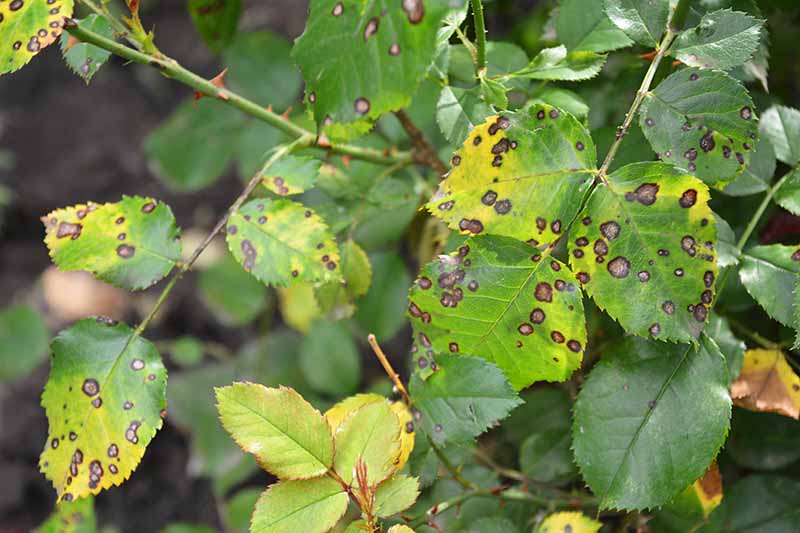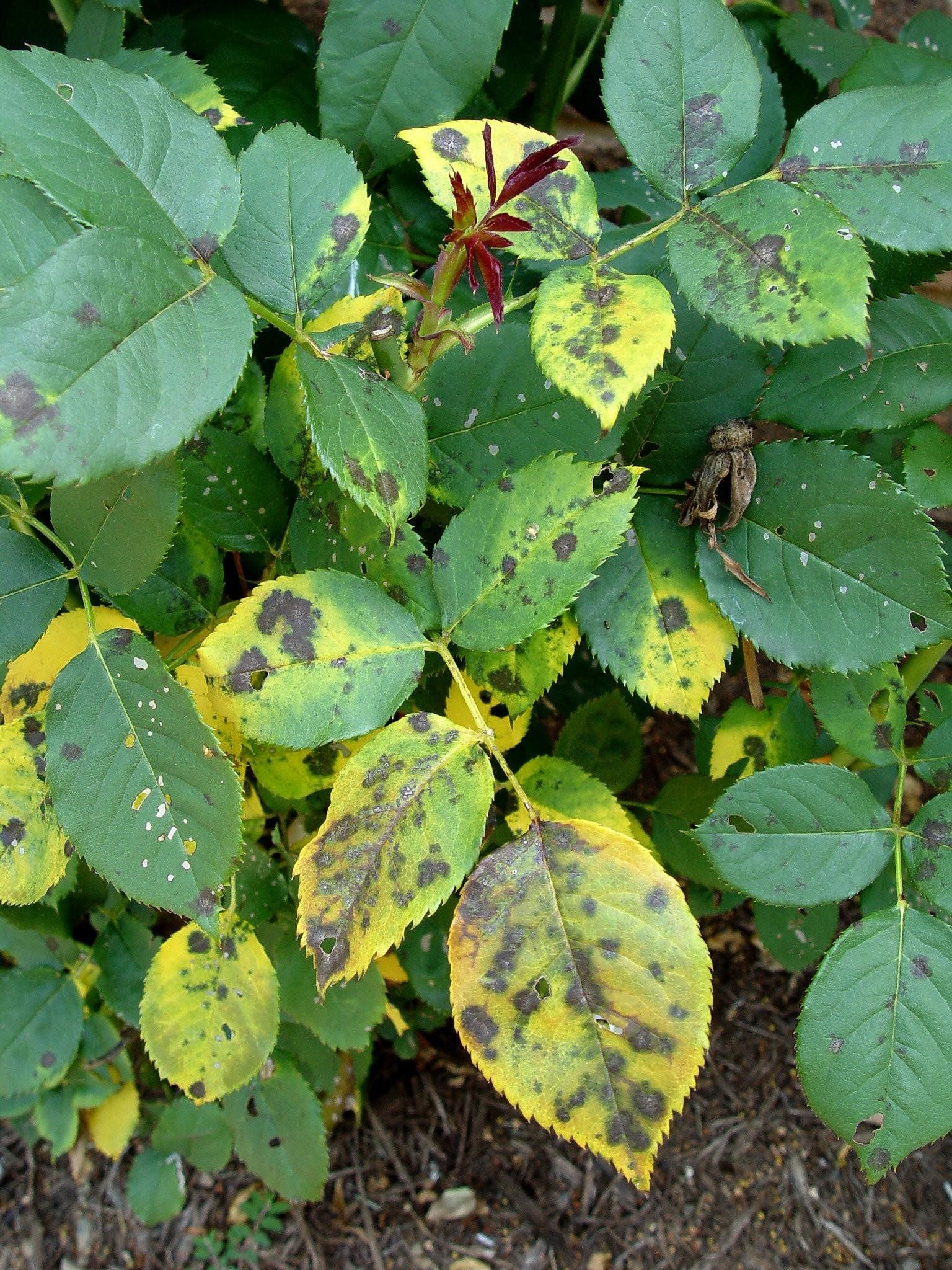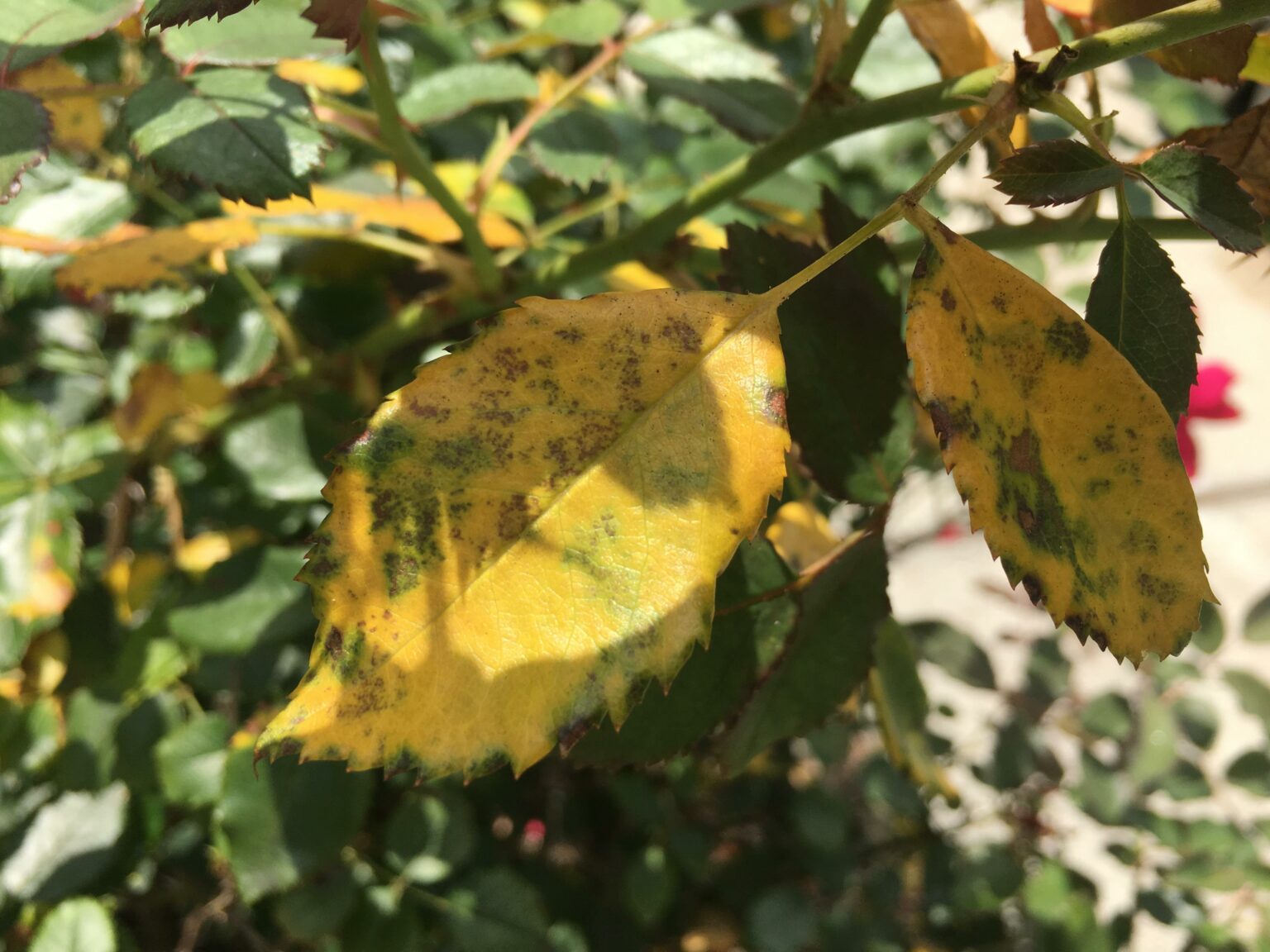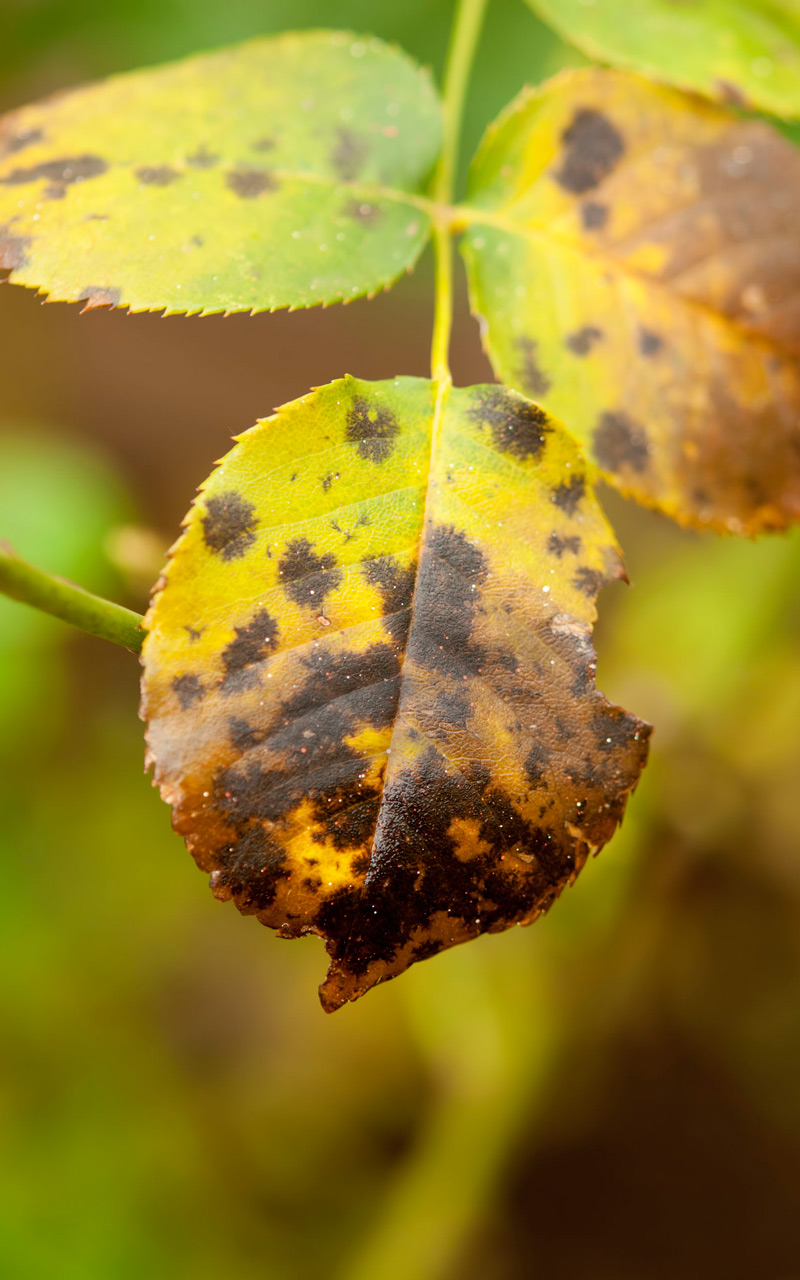Understanding the Causes of Yellow Leaves and Black Spots on Roses
Roses with yellow leaves and black spots can be a frustrating and disheartening sight for any rose enthusiast. However, before attempting to treat the issue, it’s essential to understand the underlying causes of this problem. Yellow leaves and black spots on roses can be caused by a variety of factors, including fungal diseases, pests, nutrient deficiencies, and environmental stressors.
Fungal diseases, such as black spot and powdery mildew, are common causes of yellow leaves and black spots on roses. These diseases thrive in warm, humid environments and can be spread through water splashing, wind, or insects. To identify fungal diseases, look for characteristic symptoms such as black spots, white powdery patches, or yellowing leaves.
Pests, including aphids, whiteflies, and spider mites, can also cause yellow leaves and black spots on roses. These pests feed on the sap of the plant, causing damage to the leaves and stems. To identify pest infestations, look for signs such as sticky honeydew, white eggs, or actual pests on the plant.
Nutrient deficiencies, particularly nitrogen, iron, and magnesium deficiencies, can also cause yellow leaves and black spots on roses. These deficiencies can be caused by poor soil quality, inadequate fertilization, or excessive watering. To identify nutrient deficiencies, look for characteristic symptoms such as yellowing leaves, stunted growth, or poor flower production.
Environmental stressors, including extreme weather, soil pH, and soil moisture, can also contribute to yellow leaves and black spots on roses. For example, roses exposed to extreme temperatures, drought, or waterlogged soil may develop yellow leaves and black spots. To identify environmental stressors, look for signs such as scorched leaves, wilted stems, or poor root growth.
By understanding the underlying causes of yellow leaves and black spots on roses, you can take the first step towards reviving your rose garden. In the next section, we’ll explore how to diagnose and treat fungal diseases, one of the most common causes of this problem.
How to Diagnose and Treat Fungal Diseases in Roses
Fungal diseases are a common cause of yellow leaves and black spots on roses. To diagnose fungal diseases, look for characteristic symptoms such as black spots, white powdery patches, or yellowing leaves. Inspect the plant carefully, and check for signs of fungal growth, such as mushrooms or conks.
Once you’ve diagnosed a fungal disease, it’s essential to treat it promptly to prevent the disease from spreading. Here’s a step-by-step guide on how to treat fungal diseases in roses:
1. Remove infected leaves and stems: Use pruning shears to remove any infected leaves and stems, making sure to disinfect the shears between cuts to prevent the spread of the disease.
2. Apply a fungicide: Use a fungicide specifically designed for roses, following the instructions on the label carefully. Make sure to spray the entire plant, including the undersides of leaves and stems.
3. Improve air circulation: Fungal diseases thrive in humid environments. Improve air circulation around the plant by pruning nearby plants or installing a fan.
4. Reduce watering: Overwatering can exacerbate fungal diseases. Reduce watering to once a week, and make sure the soil drains well to prevent waterlogged soil.
5. Use organic alternatives: If you prefer to avoid chemical fungicides, consider using organic alternatives such as neem oil, sulfur, or copper-based products.
Some popular fungicides for roses include:
– Scotts DiseaseEx: A broad-spectrum fungicide that controls a wide range of fungal diseases.
– Miracle-Gro Fungicide: A systemic fungicide that absorbs into the plant, providing long-lasting protection.
– Espoma Organic Fungicide: A natural, organic fungicide that uses neem oil to control fungal diseases.
By following these steps and using the right fungicides, you can effectively treat fungal diseases in your roses and prevent yellow leaves and black spots.
Nutrient Deficiencies: How to Identify and Address Them in Your Rose Garden
Nutrient deficiencies are a common cause of yellow leaves and black spots on roses. Roses require a balanced diet of nutrients to stay healthy and thrive. Here are some common nutrient deficiencies that can cause yellow leaves and black spots on roses:
Nitrogen Deficiency: Nitrogen is essential for healthy leaf growth and development. A nitrogen deficiency can cause yellow leaves, stunted growth, and poor flower production. To address a nitrogen deficiency, use a balanced fertilizer that contains nitrogen, phosphorus, and potassium.
Iron Deficiency: Iron is essential for healthy leaf growth and development. An iron deficiency can cause yellow leaves with green veins, stunted growth, and poor flower production. To address an iron deficiency, use an iron-rich fertilizer or add iron sulfate to the soil.
Magnesium Deficiency: Magnesium is essential for healthy leaf growth and development. A magnesium deficiency can cause yellow leaves, stunted growth, and poor flower production. To address a magnesium deficiency, use a magnesium-rich fertilizer or add Epsom salt to the soil.
To identify nutrient deficiencies in your rose garden, look for characteristic symptoms such as yellow leaves, stunted growth, or poor flower production. You can also perform a soil test to determine the nutrient levels in your soil.
Here are some tips on how to address nutrient deficiencies in your rose garden:
1. Use a balanced fertilizer: Use a balanced fertilizer that contains nitrogen, phosphorus, and potassium to provide your roses with a balanced diet of nutrients.
2. Add organic matter: Add organic matter such as compost or manure to the soil to improve its fertility and structure.
3. Use iron-rich fertilizers: Use iron-rich fertilizers or add iron sulfate to the soil to address iron deficiencies.
4. Use magnesium-rich fertilizers: Use magnesium-rich fertilizers or add Epsom salt to the soil to address magnesium deficiencies.
Some popular fertilizers for roses include:
– Miracle-Gro Rose Food: A balanced fertilizer that contains nitrogen, phosphorus, and potassium.
– Scotts Rose & Flower Fertilizer: A balanced fertilizer that contains nitrogen, phosphorus, and potassium.
– Espoma Organic Rose Tone Fertilizer: An organic fertilizer that contains nitrogen, phosphorus, and potassium.
By addressing nutrient deficiencies in your rose garden, you can help prevent yellow leaves and black spots and promote healthy growth and development.
Pest Control: Managing Pests that Can Cause Yellow Leaves and Black Spots on Roses
Pests can be a significant problem for rose gardens, causing yellow leaves and black spots on roses. Some common pests that can cause these problems include aphids, whiteflies, and spider mites. Here are some tips on how to manage these pests using integrated pest management techniques:
Aphids: Aphids are small, soft-bodied insects that feed on the sap of roses. They can cause curled or distorted leaves, and can also transmit plant viruses. To manage aphids, use insecticidal soap or neem oil, and make sure to spray the undersides of leaves where aphids often hide.
Whiteflies: Whiteflies are small, winged insects that feed on the sap of roses. They can cause yellow leaves and stunted growth, and can also transmit plant viruses. To manage whiteflies, use yellow sticky traps or insecticidal soap, and make sure to spray the undersides of leaves where whiteflies often hide.
Spider Mites: Spider mites are small, spider-like insects that feed on the sap of roses. They can cause yellow leaves and fine webbing on the leaves and stems. To manage spider mites, use insecticidal soap or neem oil, and make sure to spray the undersides of leaves where spider mites often hide.
Integrated Pest Management (IPM) Techniques: IPM techniques involve using a combination of methods to manage pests, including cultural, mechanical, and chemical controls. Here are some IPM techniques you can use to manage pests on your roses:
1. Inspect your plants regularly: Regularly inspect your roses for signs of pests, such as aphids, whiteflies, or spider mites.
2. Use physical barriers: Use physical barriers, such as fine mesh or fine netting, to prevent pests from reaching your roses.
3. Practice good sanitation: Practice good sanitation by removing weeds and debris from around your roses, and disposing of infested plants.
4. Use biological controls: Use biological controls, such as lady beetles or lacewings, to control pest populations.
5. Use chemical controls: Use chemical controls, such as insecticidal soap or neem oil, as a last resort to control pest populations.
Some popular pest control products for roses include:
– Ortho Rose & Flower Insect Killer: A chemical insecticide that controls aphids, whiteflies, and spider mites.
– Safer Brand Rose & Flower Insect Killer: An organic insecticide that controls aphids, whiteflies, and spider mites.
– Espoma Organic Insecticidal Soap: An organic insecticide that controls aphids, whiteflies, and spider mites.
By using these IPM techniques and products, you can effectively manage pests on your roses and prevent yellow leaves and black spots.
Environmental Stressors: How to Protect Your Roses from Extreme Weather and Soil Conditions
Environmental stressors such as extreme weather, soil pH, and soil moisture can cause yellow leaves and black spots on roses. Here are some tips on how to protect your roses from these stressors:
Extreme Weather: Extreme weather conditions such as high winds, heavy rainfall, and intense sunlight can cause stress to roses, leading to yellow leaves and black spots. To protect your roses from extreme weather, consider providing shade, using windbreaks, and installing a drip irrigation system to reduce water stress.
Soil pH: Soil pH can affect the availability of nutrients to roses, leading to yellow leaves and black spots. Most roses prefer a slightly acidic to neutral soil pH, ranging from 6.0 to 7.0. To adjust soil pH, consider adding lime to raise the pH or sulfur to lower the pH.
Soil Moisture: Soil moisture can also affect the health of roses, leading to yellow leaves and black spots. Overwatering can cause roots to rot, while underwatering can cause stress. To maintain optimal soil moisture, consider installing a soil moisture meter and adjusting watering schedules accordingly.
Other Environmental Stressors: Other environmental stressors such as temperature fluctuations, air pollution, and soil compaction can also cause yellow leaves and black spots on roses. To mitigate these stressors, consider providing a layer of mulch to regulate soil temperature, using air-purifying plants to reduce air pollution, and avoiding heavy foot traffic to prevent soil compaction.
Some popular products that can help protect roses from environmental stressors include:
– Scotts Rose & Flower Soil: A soil amendment that helps to adjust soil pH and improve soil structure.
– Miracle-Gro Rose Food: A fertilizer that provides essential nutrients to roses, helping to promote healthy growth and development.
– Espoma Organic Rose Tone Fertilizer: An organic fertilizer that provides essential nutrients to roses, helping to promote healthy growth and development.
By protecting your roses from environmental stressors, you can help prevent yellow leaves and black spots and promote healthy growth and development.
Preventative Measures: How to Keep Your Roses Healthy and Thriving
Preventing yellow leaves and black spots on roses requires a combination of good gardening practices and regular maintenance. Here are some preventative measures you can take to keep your roses healthy and thriving:
Regular Watering: Roses need consistent moisture, especially during hot weather. Water your roses deeply once or twice a week, depending on weather conditions.
Fertilization: Feed your roses with a balanced fertilizer in early spring and again in mid-summer. This will provide essential nutrients for healthy growth and development.
Pruning: Prune your roses regularly to promote healthy growth and prevent disease. Remove dead, diseased, or damaged branches, and shape the plant to maintain its natural form.
Mulching: Mulch around the base of your roses to retain moisture, suppress weeds, and regulate soil temperature. Use a layer of 2-3 inches of organic mulch such as wood chips or bark.
Soil Care: Test your soil regularly to ensure it has the right pH and nutrient levels for your roses. Add amendments as needed to maintain optimal soil conditions.
Pest and Disease Management: Regularly inspect your roses for signs of pests or disease, and take action promptly to prevent infestations or infections.
Some popular products that can help with preventative measures include:
– Miracle-Gro Rose Food: A balanced fertilizer that provides essential nutrients for healthy growth and development.
– Scotts Rose & Flower Mulch: A high-quality mulch that retains moisture, suppresses weeds, and regulates soil temperature.
– Espoma Organic Rose Tone Fertilizer: An organic fertilizer that provides essential nutrients for healthy growth and development.
By following these preventative measures, you can help prevent yellow leaves and black spots on your roses and keep them healthy and thriving.
Product Review: Top Fungicides and Fertilizers for Roses with Yellow Leaves and Black Spots
When it comes to addressing yellow leaves and black spots on roses, using the right products can make all the difference. Here’s a review of some top fungicides and fertilizers that can help:
Scotts Rose & Flower Fungicide: This fungicide is specifically designed to control fungal diseases that cause yellow leaves and black spots on roses. It’s easy to use and provides long-lasting protection.
Miracle-Gro Rose Food: This fertilizer is formulated to provide essential nutrients to roses, promoting healthy growth and development. It’s also designed to help prevent yellow leaves and black spots.
Espoma Organic Rose Tone Fertilizer: This organic fertilizer is made from natural ingredients and provides a slow release of nutrients to roses. It’s a great option for those looking for a more natural solution.
Ortho Rose & Flower Insect Killer: This insecticide is designed to control pests that can cause yellow leaves and black spots on roses, such as aphids and whiteflies. It’s easy to use and provides quick results.
When choosing a fungicide or fertilizer, make sure to read the label carefully and follow the instructions. It’s also important to note that prevention is key, so make sure to use these products as part of a comprehensive rose care routine.
Here’s a comparison of these products:
| Product | Type | Active Ingredient | Price |
| Scotts Rose & Flower Fungicide | Fungicide | Chlorothalonil | $10.99 |
| Miracle-Gro Rose Food | Fertilizer | Nitrogen, Phosphorus, Potassium | $12.99 |
| Espoma Organic Rose Tone Fertilizer | Fertilizer | Natural ingredients | $14.99 |
| Ortho Rose & Flower Insect Killer | Insecticide | Pyrethrin | $11.99 |
By using these products and following the tips outlined in this article, you can help prevent yellow leaves and black spots on your roses and keep them healthy and thriving.
Conclusion: Reviving Your Rose Garden with the Right Solutions
Reviving a rose garden with yellow leaves and black spots requires a combination of good gardening practices, regular maintenance, and the right products. By understanding the common causes of yellow leaves and black spots, including fungal diseases, pests, nutrient deficiencies, and environmental stressors, you can take the first step towards reviving your rose garden.
In this article, we’ve discussed the importance of diagnosing and treating fungal diseases, identifying and addressing nutrient deficiencies, managing pests, and protecting your roses from environmental stressors. We’ve also reviewed and compared top fungicides and fertilizers that can help address yellow leaves and black spots on roses.
By following the tips and advice outlined in this article, you can help prevent yellow leaves and black spots on your roses and keep them healthy and thriving. Remember to always read the label carefully and follow the instructions when using any products, and to take a holistic approach to rose care by combining good gardening practices with regular maintenance and the right products.
With the right solutions and a little bit of effort, you can revive your rose garden and enjoy beautiful, healthy roses for years to come. So why not get started today and give your roses the care they deserve?







